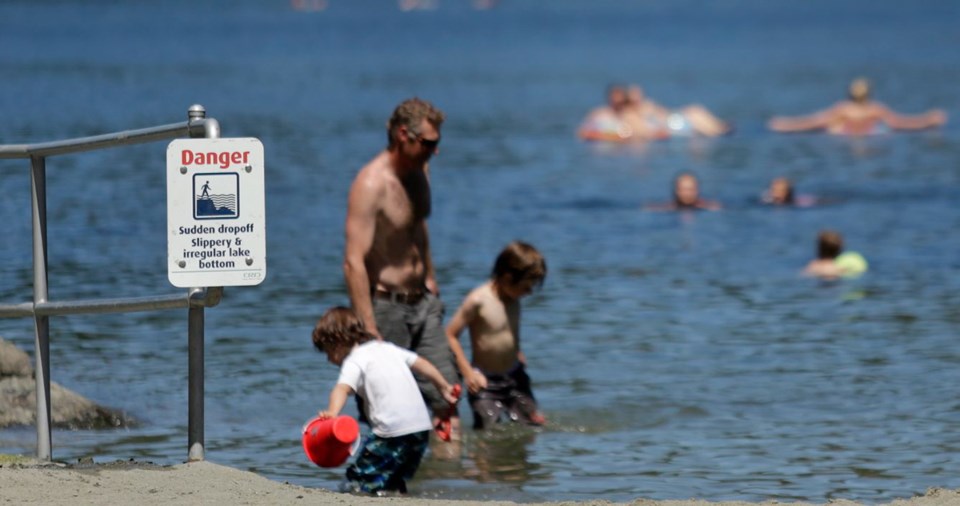The Capital Regional District should continue to focus on signage and education rather than reinstating lifeguards at regional parks, say CRD parks staff.
The CRD was asked by View Royal council to return lifeguards to Thetis Lake, which is within View Royal’s municipal boundaries, following serious incidents at the lake this summer.
A woman slipped and fell, suffering serious injuries, from the Sunnyside cliffs on July 5. Two swimmers nearly drowned on June 27. The three people were saved by others in the water.
CRD staff say that since the use of lifeguards was discontinued at Thetis in 2003, there have been several serious water-related incidents. Two people drowned in 2004, one in 2006 and one in 2013.
But it’s unlikely lifeguards would have made a difference, staff say.
Before the service was discontinued, lifeguards were stationed at the main beach at Thetis Lake and Beaver Beach at Elk/Beaver Lake. But the staff report notes that there are at least eight places around Thetis where swimmers enter the water.
“Even if a lifeguard service is provided at a park, incidents can happen outside guarded areas and/or when lifeguards are not on duty,” the report says.
“I certainly understand the staff recommendation but I’m not sure that I’m in support of it,” said David Screech, View Royal mayor and parks committee vice-chair. “Our council feels quite strongly that at the very least we need to have lifeguards at the main beach during the summer months.”
Screech said Thetis is becoming busier every year. “It’s a busier and busier lake and there are steep drop-offs there, and kids have drowned within just feet of that main beach area. So it’s a tough one.”
CRD parks committee chair Mike Hicks, while sympathetic to Screech’s point of view, said he supports the staff recommendation. Hicks said he personally stood on the beach during peak season to monitor the situation. Not only was it extremely noisy with all the children screaming, the closest cliffs where people jump are about 400 metres away, he said.
“The bottom line for me was would a lifeguard save a person that jumped off a cliff illegally? The answer to me was: No,” Hicks said. “I just don’t think it’s practical. If the intent is to save lives, I don’t think a lifeguard would see or hear or see anyone who jumped off a cliff.”
Both CRD staff and the B.C. Coroners Service note that a lack of proficiency in English and unfamiliarity with common hazards in B.C. lakes might have been factors in the fatalities.
“Three of the five people who drowned at Thetis Lake since 1999 and all four of those involved in the serious incidents in 2014 and 2017 were international visitors with limited knowledge of the English language,” the report says.
A coroner’s report following a drowning in 2006 noted that visitors to B.C. might not realize lakes here are colder than what they are used to. In response to a coroner’s recommendation symbols were added to warning signs in 2006 and updated in 2013 to include “images, shapes and colours that are internationally recognizable,” says the CRD staff report
CRD staff estimate the cost of providing lifeguards seven days a week during summer season at $75,000 per beach — $68,000 for salaries, $7,000 for equipment and training.
“At Thetis Lake Regional Park, a minimum of three lifeguards would be required in the shoulder season (salary cost: $28,000) and six lifeguards would be required in July/August (salary cost: $40,000). Ongoing annual costs would be $70,000.”



